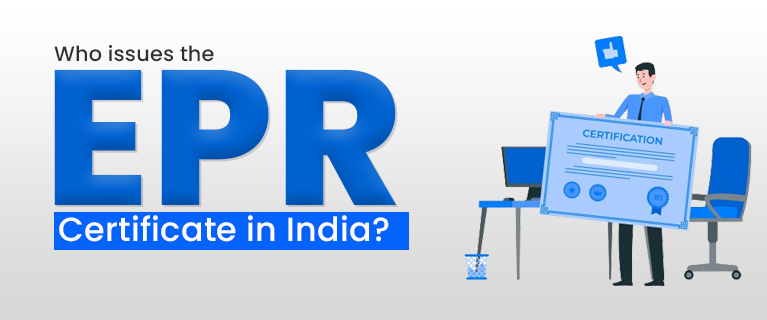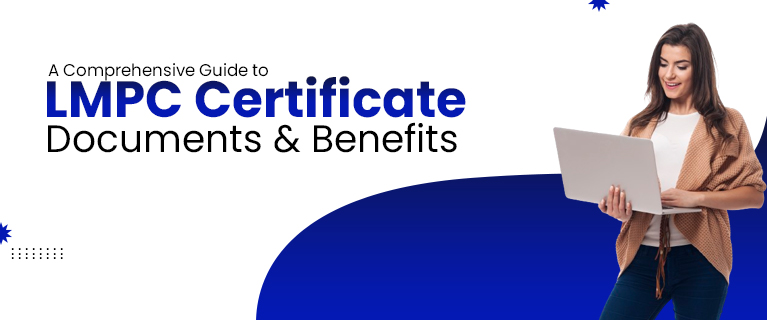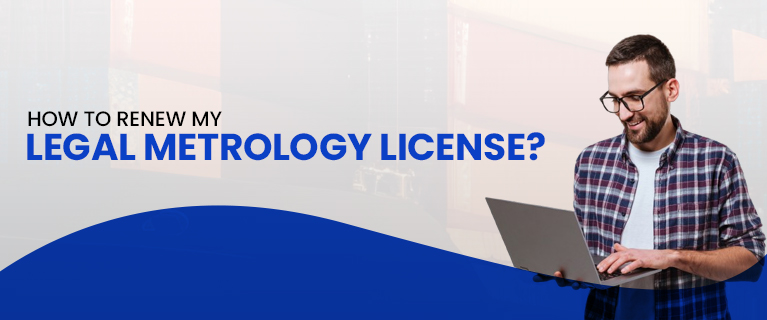EMPLOYEE STOCK OWNERSHIP PLAN (ESOP)
An ESOP (Employee stock ownership plan) insinuates a worker advantage plan which offers representatives a possession interest in the affiliation. Representative stock proprietorship plans are given as prompt stock, advantage sharing plans, or compensation, and the business has the sole civility in finishing up who could benefit from these decisions.
Notwithstanding, Employee stock ownership plans are simply choices that could be bought at a predefined cost before the activity date. There are characterized rules and guidelines spread out in the Companies Rules which businesses need to follow for allowing of Employee stock ownership plans to their employees.
How ESOPs work?
An association awards an Employee stock ownership plan to its employees for purchasing a predetermined number of portions of the organization at a characterized cost after the chosen time frame (a specific number of years). Before an employee could practice his choice, he needs to go through the pre-characterized vesting period which infers that the employee needs to work for the association until a section or the whole stock choices could be worked out.
ESOP Rules
An ESOP is a kind of worker advantage plan, near to a great extent to an advantage sharing arrangement. In an ESOP, an affiliation sets up a trust hold, into which it contributes new packages of its own stock or money to purchase existing offers. Of course, the Employee stock ownership plan can obtain money to buy new or existing offers, with the association making cash responsibilities to the arrangement to engage it to repay the development. In spite of how the arrangement gets stock, association responsibilities to the trust are charge deductible, inside explicit cutoff focuses.
The 2017 assessment charge limits net revenue derivations for organizations to 30% of EBITDA (profit before revenue, expenses, devaluation, and amortization) for quite some time, so, all in all, the limit diminishes to 30% of EBIT (not EBITDA). As such, beginning in 2022, organizations will take away deterioration and amortization from their profit prior to computing their most extreme deductible interest installments.
New utilized ESOPs where the organization acquires a sum that is enormous comparative with its EBITDA might find that their deductible costs will be lower and, along these lines, their available pay might be higher under this change. This change won't influence 100%-Employee stock ownership plan possessed S partnerships since they don't settle charges.
Offers in the trust are dispensed to individual employee accounts. Despite the fact that there are a few special cases, by and large, all full-time employees more than 21 partake in the plan. Portions are made either based on relative compensation or some more equivalent recipe. As employees collect positions with the organization, they get an expanding right to the offers in their record, an interaction known as vesting. Employees should be 100% vested inside three to six years, contingent upon whether vesting is at the same time (bluff vesting) or continuous.
At the point when employees leave the organization, they accept their stock, which the organization should repurchase from them at its honest evaluation (except if there is a public market for the offers). Privately owned businesses should have a yearly external valuation to decide the cost of their offers. In privately-owned businesses, employees should have the option to cast a ballot their apportioned offers on significant issues, like shutting or migrating, yet the organization can pick whether to go through casting ballot rights, (for example, for the governing body) on different issues. In broad daylight organizations, employees should have the option to cast a ballot on all issues.
Why Company offers ESOPs to their employees?
Associations frequently use Employee stock ownership plans as a device for drawing in and holding top-notch employees. Associations typically appropriate the stocks in a staged way. For example, an organization may give its employees the stocks at the end of the monetary year, in this way offering its employees a motivating force for staying with the association for getting that award. Organizations offering ESOPs have long-haul targets. Not just organizations wish to hold employees for a long haul, yet in addition, plan to make them the partners of their organization.
The greater part of the IT organizations have disturbing weakening rates, and ESOPs could assist them with cutting down such weighty steady loss Start-ups offer stocks for drawing inability. Frequently such associations are desperate and can't offer attractive compensations. However, by offering a stake in their association, they make their pay bundle cutthroat.
ESOPs from an employee’s perspective
With ESOPs, an employee gets the advantage of securing the portions of the organization at the ostensible rate and sell them (after a characterized residency set by his boss) and make a benefit. There are a few examples of overcoming the adversity of an employee rounding up the wealth along with originators of the organizations. A truly striking model is of Google when it opened up to the world. Its originators Sergey Brin and Larry Page turned into the most extravagant people on the planet, even the stock-holder employees acquired millions as well.
You should also read this: Employees Provident Fund Organization (EPFO)
Why is ESOP important?
With an Employee stock ownership plan, an employee gets the advantage of securing the portions of the organization at the ostensible rate and sell them (after a characterized residency set by his boss) and make a benefit. There are a few examples of overcoming the adversity of an employee rounding up the wealth along with organizers of the organizations. An entirely outstanding model is of Google when it opened up to the world. Its organizers Sergey Brin and Larry Page turned into the most extravagant people on the planet, even the stock-holder employees procured millions as well.
Uses for ESOPs
- To purchase the portions of a withdrawing proprietor: Owners of secretly held organizations can utilize an ESOP to make a prepared market for their offers. Under this methodology, the organization can make charge deductible money commitments to the ESOP to purchase out a proprietor's offers, or it can have the ESOP get the means to purchase the offers (see beneath).
- To acquire cash at a lower after-charge cost: ESOPs are special among advantage plans in their capacity to get cash. The Employee stock ownership plan acquires cash, which it uses to purchase organization offers or portions of existing proprietors. The organization then, at that point, makes charge deductible commitments to the ESOP to reimburse the advance, which means both head and interest are deductible.
- To make an extra employee advantage: An organization can just issue new or depository offers to an ESOP, deducting their incentive (for up to 25% of covered compensation) from available pay. Or on the other hand, an organization can contribute cash, purchasing shares from existing public or private proprietors. Out in the open organizations, which represent about 5% of the plans and about 40% of the plan members, ESOPs are regularly utilized related to employee investment funds plans. Maybe than coordinating with employee reserve funds with cash, the organization will coordinate with them with stock from an ESOP, frequently at a higher coordinating with level.
Benefits of ESOPs for the employers
Stock choices are given by an association as an inspiration to its employees. As the employees would help when the organization's offer costs take off, it would be a motivating force for the employee to put in his 100%. In spite of the fact that inspiration, employee maintenance, and granting difficult work are the key advantages that ESOP brings to the businesses, there are a few other essential benefits as well.
With the assistance of ESOP alternatives, associations could keep away from the money pay as a prize, in this way setting aside on prompt money surge. For associations that are beginning their business procedure on a greater scale or extending their business, granting their employees with ESOPs would work out to be the most achievable choice than the monetary compensations.
Issues identified with ESOPs for the businesses
It's not difficult to pitch the advantages of ESOPs for the organizations thinking about the liquidity and progression choices. Nonetheless, there are valid justifications not to go for ESOPs. Employee stock ownership plans have complex guidelines and need huge oversight. Despite the fact that re-appropriating this capacity to outside guides and ESOP TPA (Third Party Administration) firms could oversee it, the ESOP organization requires some inner workforce for advocating this program.
In the event that an organization doesn't have the staff to accomplish the ESOP work appropriately, they could chance issues and possible infringement. When the ESOPs are set up, the organization needs a legitimate organization including the outsider organization, trustee, valuation, lawful expenses. Organization proprietors and the administration should know about the continuous expenses.
On the off chance that the income which is committed as far as possible the money accessible for reinvesting in the business over a long haul, the ESOP plot is anything but a solid match for such an organization. For organizations requiring critical extra capital for carrying on business tasks, they should keep away from ESOPs. The ESOP plans utilize the income of the organization for financing the acquisition of offers from its investors.
On the off chance that an organization requires the assets for extra working capital or capital uses, the ESOP exchanges would contend with this essential prerequisite, making an emergency circumstance for the administration.
Major Tax Benefits of ESOP
ESOPs have various huge tax cuts, the most significant of which are:
- Contributions of stock are charge deductible: That implies organizations can get a current income advantage by giving new offers or depository offers to the ESOP, yet this implies existing proprietors will be weakened.
- Cash commitments are deductible: An organization can contribute cash on an optional premise year-to-year and take a duty allowance for it, regardless of whether the commitment is utilized to purchase shares from current proprietors or to develop money save in the ESOP for sometime later.
- Contributions used to reimburse an advance the ESOP takes out to purchase organization shares are charge deductible: The ESOP can acquire cash to purchase existing offers, new offers, or depository shares. Despite the utilization, the commitments are deductible, which means ESOP financing is done in pretax dollars.
- Sellers in a C organization can get a duty deferral: In C companies, when the ESOP possesses 30% of the multitude of offers in the organization, the vendor can reinvest the returns of the deal in different protections and concede any expense on the addition.
- In S enterprises, the level of ownership held by the ESOP isn't dependent upon personal assessment at the government level (and normally the state level also): That implies, for example, that there is no annual duty on 30% of the benefits of an S partnership with an ESOP holding 30% of the stock, and no personal expense at all on the benefits of an S organization entirely possessed by its ESOP. Note, in any case, that the ESOP actually should get supportive of the rata portion of any conveyances the organization makes to proprietors.
- Dividends are charge deductible: Reasonable profits used to reimburse an ESOP advance, gone through to employees, or reinvested by employees in organization stock are charge deductible.
- Employees pay no assessment on the commitments to the Employee stock ownership plan, just the appropriation of their records, and afterward at possibly positive rates: The employees can turn over their dispersions in an IRA or other retirement plan or pay a current expense on the dissemination, with any increases aggregated over the long haul burdened as capital additions. The personal expense piece of the conveyances, be that as it may, is dependent upon a 10% punishment whenever made before ordinary retirement age.
Note that all commitment limits are dependent upon specific restrictions, albeit these infrequently represent an issue for organizations.
The key features that make them unique include:
- It is a voluntary plan where the employer's contribution is tax-deductible against income tax while it is not taxable for employees.
- Employee Holdings may be accumulated over a period of time.
- The plan can be customized to fit the needs of your business or industry, along with many other features that are available.
An ESOP is not an automatic solution to all problems faced by Indian companies today. It basically works as an excellent tool for transferring ownership from one generation to the next and gives the employees a sense of belongingness at the workplace.
The need for setting up an ESOP in India depends upon various factors which include the availability of resources, government rules/regulations, etc., depending on type, nature, and size of business.
The process may vary slightly depending upon these factors but generally involves the following steps:
1) Deciding on structure (i.e., whether Statutory or Non-Statutory) and type (i.e., Listed/Unlisted).
2) Deciding on the quantum of shares to be allotted under ESOP.
3) Issuing of shares to employees by way of free issue, bonus issue, or right issue.
4) Employee Stock Ownership Trust (ESOT) is formed wherein the trustees shall be selected and incorporation proceedings completed. A trust deed must also be executed in order to formalize the agreement between employer and trustees for the administration of the trust during the term of ESOP. It may contain certain confidentiality clauses which need to be complied with strictly while disclosing any information about company financials, business, etc.
5) Subsequent steps would include:
- a) Allotment of shares to employees;
- b) Issuance and transfer of debentures (optional); and
- c) Transfer of assets or transfer/carry forward of unabsorbed balance after the ESOP period.
6) Record keeping requirements such as filing returns, bookkeeping, etc., must be complied with strictly at all times.
7) Compliance with various statutory rules such as those relating to labor laws, foreign exchange control regulations, etc. is necessary to ensure smooth operation of the plan. Employment contracts along with service conditions must also be drafted so as not to violate any law in this regard. These contracts may vary depending upon the type and nature of work done by employees and accordingly their salaries may have to be restructured before ESOP is implemented.
8) Payment of consideration by the employer on the acquisition of shares from employees must be done as per tax rules and regulations as this payment will be allowable as a deduction in computing the employer's taxable income for that year.
9) Any merger, amalgamation, or demerger shall involve the transfer of all assets including those held under an ESOP from one company to any other which is being undertaken with a change in shareholding pattern, may involve certain tax implications which should be taken into account while formulating business strategy.
ESOP can become very beneficial to companies if implemented properly, but it cannot yield overnight results. It has its own pros and cons like every other scheme/plan and should be implemented only after considering all aspects carefully.
The process for setting up an ESOP in India is not very difficult if handled professionally by your management, but certain formalities must be complied with strictly while implementing it. These formalities include complying with various statutory provisions such as tax laws (which vary from time to time), labor laws, etc.
CONCLUSION
ESOPs are a great way to provide employees with the benefits of ownership and encourage them to stay loyal in their current roles. With an ESOP, you can offer your employee equity in exchange for staying at your company or in return for good performance over time. For example, if one of your top salespeople has been struggling lately but they have stayed committed because they want stock options, giving them some shares may incentivize them enough to get back on track. Talk about this plan with other companies who might be interested too! If you need help implementing these principles into practice, we’re here to partner with you every step of the way.
Also Read,
Section 112A of Income Tax Act, 1961
Rent Control Act – Rental Agreement, Rights of Tenant & Landlord










